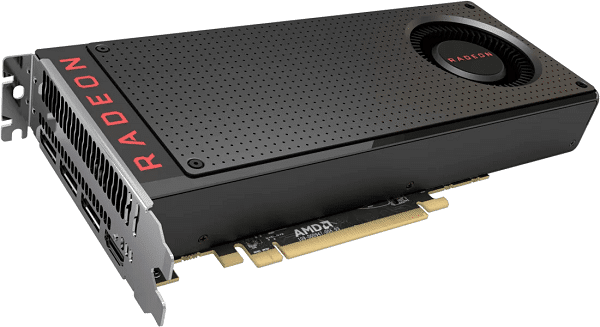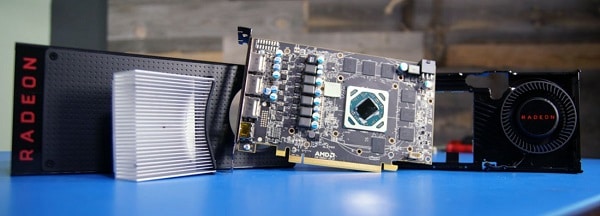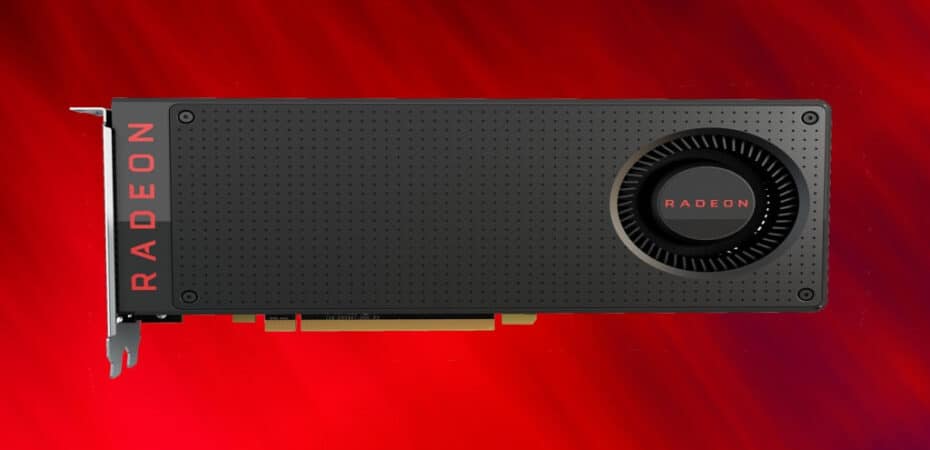Pros
- Exceptional 1080p performance
- Edged-out previous-gen cards, especially for newer games.
- VR-friendly.
- Pricing plans start much lower than other cards.
- Silent operation.
Cons
- Slightly noisy, only with significant load
- Not faster than a GTX 970
- Can’t compete with Nvidia’s new high-end offerings.
- Less compact than Radeon R9 Nano.
Specs
| GCN Architecture | 4th Generation |
| Compute Unit | 36 |
| Peak Performance | Up to 5.8 TFLOPS |
| Clock Speed – boost/base | 1266 MHz / 1120 MHz |
| Steam Process | 2304 |
| Board Power | 150W |
| VR Premium | Yes |
| DisplayPort Version | 1.3 HBR / 1.4 HDR Ready |
| AMD Freesync ™ Technology | Yes |
| DirectX ™ Support | Yes |
| Vulkan ™ Support | Yes |
| Memory Type | GDDR5 |
| Memory Bandwidth | 224 GB or higher |
| Memory Size | 4/8 GB |
| Memory Interface | 256 bit |
Let’s kick off my first-hand AMD Radeon RX 480 review with some background checks!
Something about AMD Radeon RX 480

The RX 480 is a massive introduction to the world of VR gaming, managing to become the cheapest yet recommended graphics card for specifications of Oculus Rift, HTC Vive, and some others.
The Radeon RX 480 ($175 – $250 on Amazon) is a watershed GPU for AMD, as it is the company’s corner store, following the all-new, highly-anticipated Polaris architecture.
Being the first-ever built of next-gen 14nm “3D” FinFET process, AMD Radeon RX 480 is a leap forward, especially in performance-per-watt for AMD’s GPUs potential. The company claims that it’s 2.8x better than the previous generation of cards.
The RX 480 GPU is AMD’s Polaris 10, aiming to offer enough power and bring high-end gaming and the virtual reality experience to more and more PC enthusiasts and game freaks.
AMD Radeon RX 480 is packed with…
AMD’s Radeon RX 480 boasts 2,304 stream processors, 8GB of GDDR5 on a 256-bit bus enabling a bandwidth of 224 GB/s, a boost clock registering up at 1,266 MHz, and 36 compute units.
Performance-wise, it enables around 5.8 TFLOPS, placing the card exactly where it should be; you can’t afford the best one? How about buying AMD’s 4GB variant that may cost you around $199?
So, to check its real-time performance, performing at 1080p, with Far Cry Primal and The Division averaging 60 fps and 58 fps, respectively;
I have achieved…
- An average frame rate of 30 fps with my aggressively unoptimized title – Total War: Attila;
- With Rise of the Tomb Raider and Ashes of the Singularity, I have achieved 34 fps and 36 fps, respectively.
Note: To test these games using AMD Radeon RX 480, I purposely ramp up every setting possible, including HD texture packs and aggressive forms of anti-aliasing.
At 1440p, you will get RX 480’s 8GB of VRAM and the overall design of the asynchronous computing processor, having the same frame rates; the most impressive feat that I have noticed with my Ashes of the Singularity benchmark. The RX 480 helped me achieve a stunning 30 fps average – just six fps lesser than at 1080p.
AMD Radeon RX 480 – The Hardware

Keeping that 14nm GPU, the RX 480 holds an innovatively redesigned blower-style shroud that helps the card pull in air from both sides of the card. This is interesting as the card features a smaller PCB that is quite rare with mid-range graphics cards.
Having the single six-pin power with a TDP of 150W suggests that the card is equipped with a far simpler PCB design. I managed a decent 8.5% overclock with that single six-pin on the core clock and an additional 190 MHz on the memory.
Just like its others, the RX 480’s stock fan is quiet, and the card runs at a reasonable 73 degrees under load, amping up to around 82 degrees celsius – to ramp the overclocks up, within acceptable parameters, it’s a bit conservative.
Aesthetically, the Radeon RX 480 isn’t as well-flashy as some others, with a pocked plastic surface and flat sides; the card also lacks lights to illuminate the Radeon logo, and yes, there’s no protective backplate.
Its cooling system offers a single fan, spinning up to a decent whirr when under load, so it’s better if you arrange a fairly well-insulated case to control its noise, and yes, it’s far from the loudest.
Besides a single six-pin PCI Express power connector, you will find three DisplayPorts (1.4 specifications) and an HDMI port at the rear.
AMD Radeon RX 480 – Acoustics and Overclocking
Interestingly, the most significant change that begins with Polaris 10 stems from AMD’s Radeon Crimson software package that includes a fantastically in-depth overclocking utility by the name of WattMan.
For now, it’s the only way that can overclock GPUs which controls and locks voltage and limits power outside of the BETA software.
Well, aside from opening up voltage control, this new tool gives access to various other settings, including overclocking the core clock, so keep adjusting the core clock on your terms… to a certain percentage.
Or else, take more control over how your card performs by changing the frequency curve at every DPM state, along with how much voltage you want to apply at each state to the GPU.
So, I tested its overclocking potential with the voltage board up to 1150 mv at each DPM state, increased the memory offset by 192 MHz, a GPU offset of 7%, and unlocked the power limiter up to 50%. I got a final clock of 1,356 MHz.
AMD Radeon RX 480 – Software
I don’t know whether it’s in your knowledge or not that the company has undertaken a significant overhaul of its software, it means that the functional but slow (and primarily textual) Catalyst Control Center has replaced with Crimson, an intuitive application that is not only quicker to launch but visually appealing than the old Catalyst software.
Like Crimson, the WattMan is also more visually oriented, having real-time graphs of things like temperature, clock speed, and fan speed. So, if you have a high-resolution display like a 4K monitor, you will get to know a lot of info about your card and its current settings. At lower resolutions, do some scrolling to see all of the graphs and settings.
My take on AMD Radeon RX 480

In terms of price to performance, the Radeon RX 480 is astronomical. Above all, this card features an intuitive power design, runs smooth, decimating at 1080p but not-so-quietly, and yes, WattMan is quite rough around the edges.
In short, being from AMD, the kings of value, this killer card holds 60 fps at 1080p with ease, whereas, at 1440p, the fluid gaming experience will be comfortable and fun-loving.
Don’t forget to share your AMD Radeon RX 480 experience with us!
Read Also



